- Pakistan imported over 10,000 MW solar components in 2025, lifting share of China’s exports
- Solar accounted for 25% of Pakistan’s utility electricity supplies, among top global nations
International sources recorded that the year 2024 was a true landmark year for solar power. Global solar installations reached nearly 600 GW – an impressive 33 percent increase over the last year – setting yet another record. Solar accounted for 81 percent of all new renewable energy capacity added worldwide. While remaining a modest contributor to overall electricity generation for now, solar’s share in 2024 rose to 7 percent– nearly doubling in just 3 years. Solar experienced the fastest growth among all power generation technologies in terms of electricity output, 3 times as much as wind power, which was ranked second. As if that weren’t enough, global installed solar capacity in 2024 surpassed 2 TW. It took nearly 70 years to reach the first terawatt, but only two more to double it.
Looking ahead, however, there remain challenges that must be addressed for solar to continue fulfilling its potential. Although continued market growth is expected, the pace is projected to slow after various years of explosive expansion. In our most realistic scenario, experts anticipate a 10 percent rise in installations to 655 GW in 2025, with yearly growth rates remaining in the low double digits between 2027-2029, reaching 930 GW by the close of the outlook period. However, meeting the Global Solar Council’s aspirational target of 8 TW by 2030 will require a significantly accelerated pace of deployment – roughly 1 TW of new installations per year on average.
In 2024, China’s solar market grew by 30 percent to 329 GW, more than the combined total of the other top 10 markets, with a 55 percent global market share. China’s growth is a major achievement from a global decarbonisation perspective and its comprehensive solar commitment has enabled the technology’s rapid global development, but it also underscores the world’s heavy reliance on a single country. With China implementing major changes to its solar market design this year, a temporary dip in global growth in 2026 appears very likely. In these times of political unrest, low-cost solar power could turn into the key tool to offer energy security and competitiveness to nations across the world. The years ahead are crucial for solar development and will require foresight and commitment from policy leaders and financial institutions.
In the most likely medium scenario, experts expect solar’s role in the driver seat of the global energy transition to become even stronger, reaching a total installed capacity of 7.1 TW by 2030 – and delivering nearly two-thirds of the 11 TW renewable energy target set at COP28. With the right enabling conditions, solar capacity could even quadruple its capacity and exceed 8 TW by the end of the decade. In the developing countries like Pakistan, our country is rapidly emerging as a major leader in solar power deployment, and not just within emerging economies. Sources recorded that the South Asian country has boosted solar electricity generation by over 3 times the global average so far this year, fuelled by a greater than fivefold rise in solar capacity imports since 2022. That combination of rapidly rising capacity and generation has propelled solar power from Pakistan’s 5th-largest electricity source in 2023 to its largest in 2025.
Solar power in this year, has accounted for 25 percent of Pakistan’s utility-supplied electricity, which makes it one of fewer than 20 nations globally that have sourced a quarter or more of monthly electricity supplies from solar farms.
Solar farms over the first four months of 2025, generated an average of 25.3 percent of Pakistan’s utility electricity supplies. It is said that that average compares with a solar share of 8 percent globally, almost 11 percent in China, 8 percent in US and 7 percent in Europe. Only 17 countries indeed, have ever recorded a 25 percent or more share of monthly utility electricity supplies from solar farms. Between 2022 and 2024, statistics showed that Pakistan’s imports of China-made solar components jumped fivefold from almost 3,500 MW to a register 16,600 MW. Pakistan’s share of China’s total solar module exports also rose sharply, from 2 percent in 2022 to around 7 percent in 2024. And that import binge has continued into 2025. Pakistan imported just over 10,000 MW of solar components from China over the first four months of the year, compared with almost 8,500 MW during the same period in 2024. That rise of nearly 18 percent in imported capacity has lifted Pakistan’s share of China’s solar exports to new highs too, with Pakistan accounting for almost 12 percent of all of China’s solar exports so far in 2025. According to the International Trade Administration statistics, Pakistan is targeting 60 percent of electricity supplies to come from renewable sources by 2030.
Furthermore during this period, renewable energy sources generated 28 percent of the country’s electricity, so energy planners are aiming for a more than doubling in that share by the close of the decade. In the federal budget FY2025-26 to impose a 10 percent tax on imported solar panels marks a critical turning point in Pakistan’s renewable energy journey, while impacting consumers and dealers.
Sources said that it could also ramp up investments in local solar panel manufacturing. After an initial proposal of an 18 percent tax was rolled back after the industry’s reaction-cum-pushback, the newly-approved 10 percent levy is because of push up panel prices by 8 to 10 percent starting from July 1, directly impacting on dealers and consumers as well. The government of Pakistan insists this decision balances fiscal needs while maintaining support for clean energy. However, Pakistan has witnessed a historic solar boom, while becoming the world’s largest importer of solar panels in 2024.



